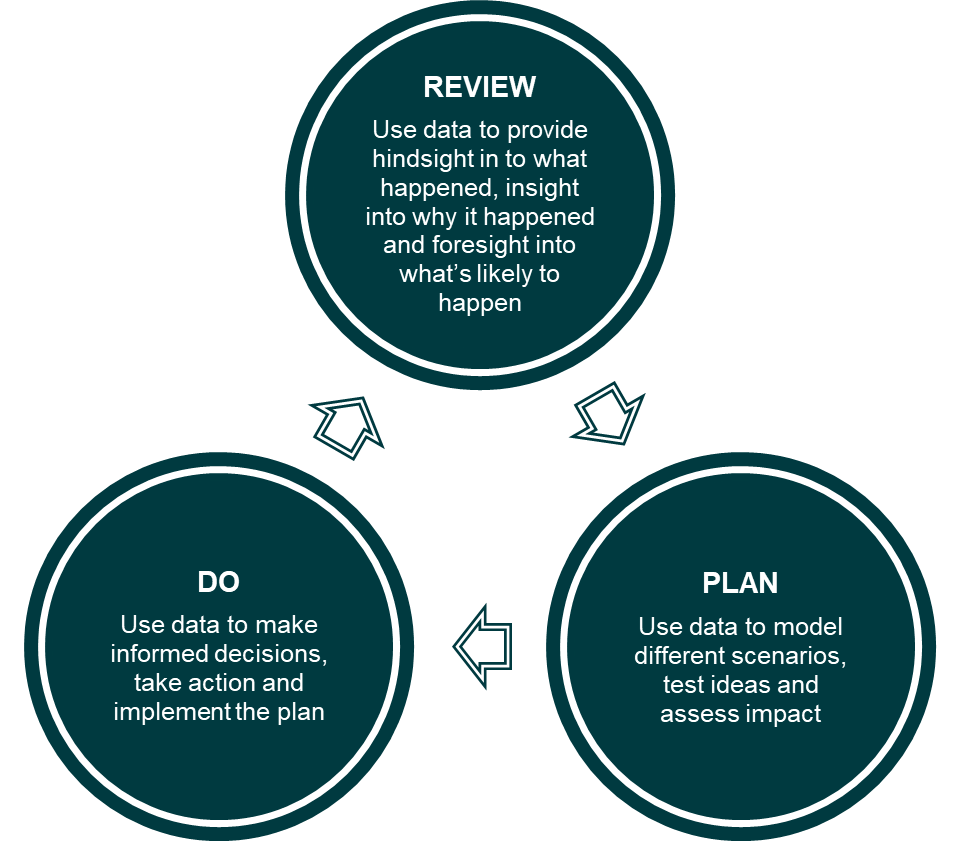The need to be data-driven in business is commonly accepted. Planning and making decisions based on hard truths over conjecture is the day-to-day norm for sales, marketing, product development and customer success functions the world over. Yet, somehow, HR still lags behind its functional cohorts. In a recent research conducted by the Corporate Research Forum, only 7% of enterprises have reached a reasonably advanced level of analytical capability within the HR department. While worryingly low, this does present a fantastic opportunity, especially given the significant influence HR can have with the human capital data assets it owns.
Here are some thoughts on how HR can extract more value from the data at its fingertips.
Turn HR reporting into action
There is no shortage of KPI reporting available to HR. Daily, monthly and annual reports on typical metrics such as engagement, attrition and performance, although useful in assessing a moment in time, is only the first step in the journey to becoming data-driven. HR will see far better results from data if it is used in an on-going management process to drive positive change. A typical cycle would look like this:
As an example from the monthly attrition report, further analysis could reveal which staff members are most likely to leave, when and why. Of those most likely to leave, who would pose the greatest impact to the business and what should be done? The work does not stop there. After the action, it is important to analyze whether the intervening actions had the desired impact. Perhaps the data reveals a correlation between attrition rate and reviews, where employees who have had to wait longer for their first formal review are more likely to leave the business. In that scenario, management can take the mitigating action to shorten the review cycles and monitor the impact of the change.
Debate with the data
What is hopefully clear is that working with data is only as static as you let it be. To become truly data-driven requires an inquisitiveness to ask more of the data than initially reported, to find the questions you didn’t know needed an answer. It is a dynamic process that uses intuition with hard facts to delve deeper, uncover more and keep questioning.
As HR is challenged to think differently about its approach to data, it should also look to expand its horizons to connect to other parts of the business. Assimilating people data with business performance data, activity data and even customer data makes it possible for HR to interrogate the workforce and understand its wider impact on the business.
While there is no silver bullet platform that does everything, equally you no longer have to be a data scientist to take advantage of data. Thankfully, today’s data technologies are accelerating the time to, and depth of insight possible for HR. Enhanced processing capabilities means data of all shapes, types and sizes can be quickly aggregated from HR, finance and other business systems, and manipulated in increasingly creative ways. New hypotheses can be posed and answered in real time.
For the HR team, this enables them to visualize and experiment with the workforce and organizational system in ways that were inconceivable a few years ago. In an age where organisational agility is a critical requirement, adopting a data-driven approach is the surest way to advance from reporting to becoming more responsive to business needs. To draw parallels with the finance team, which has the financial planning and analysis capability, so the HR team needs an organizational effectiveness capability that is strategic and forward-looking, enabled by the data.
